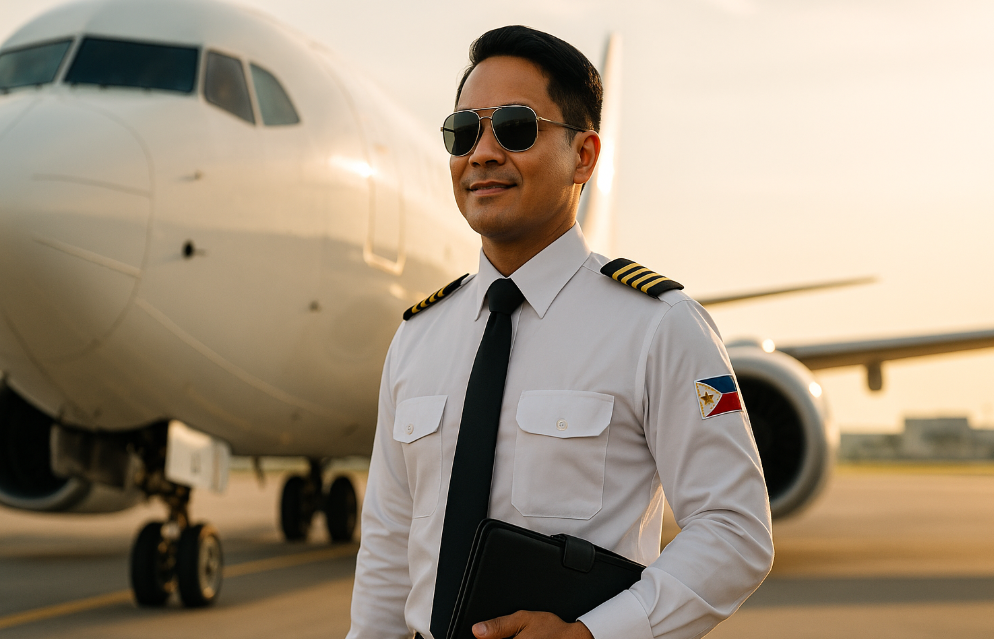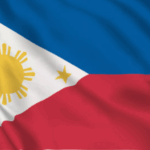Average Pilot Salary Philippines Per Month 2025
The aviation industry in the Philippines has seen a significant rebound post-pandemic, with more passengers flying both domestically and internationally. With the expansion of local carriers and a growing demand for air travel, pilots remain among the highest-paid professionals in the country.
This article provides a comprehensive breakdown of the average pilot salary in the Philippines, examining entry-level earnings, mid-career progress, top airline pay scales, and other benefits pilots receive in 2025.
How Much Salary of Pilot In Philippines?
The average estimated annual salary for pilots in the Philippines is ₱1,216,000, which equates to an average hourly rate of ₱600. This figure represents a combination of fixed monthly salaries, allowances, flight hour pay, and additional perks. However, actual pay varies widely based on experience, airline, Pilot rank, and route assignments.

Summary:
-
The average pilot salary in the Philippines is ₱1.26 million/year or ₱74k–₱188k/month.
-
Earnings grow substantially with experience, certifications, and airline type.
-
Senior captains working internationally can make ₱400k–₱700k/month tax-free.
-
Additional benefits like per diems, insurance, and travel perks boost overall compensation.
-
Metro Manila-based pilots tend to earn more due to international routes and top airline presence.
It’s common for people to confuse Flight Attendant Salary with pilot income, though both roles differ significantly in training and pay scale.
Monthly Pilot Salary by Experience Level
Pilot salaries in the Philippines differ depending on whether the pilot is new to the field or a seasoned captain. Here’s a more detailed look:
Entry-Level Pilots (First Officers)
These are typically co-pilots flying smaller aircraft or supporting senior captains on regional routes. While their base pay is modest, it grows rapidly with experience and certifications.
| Period | Amount (₱) |
|---|---|
| Monthly Salary | ₱74,215 |
| Annual Salary Estimate | ₱890,580 |
Furthermore, in the Philippines, trainee pilots in airline cadet programs typically earn ₱15,000–₱35,000 per month as an allowance during training.
Experienced Pilots (Captains)
Captains in major carriers or flying long-haul flights earn significantly more. They receive a higher base salary, flight duty pay, and command-level allowances.
| Period | Amount (₱) |
|---|---|
| Monthly Salary | ₱100,000 – ₱119,003 |
| Annual Salary Estimate | Up to ₱1,428,032 |
Salary Breakdown by Airline (2025 Data)
Different airlines in the Philippines offer different compensation packages based on size, fleet, and route network. Here are updated salary ranges:
| Airline | Monthly Salary Range | Best For | Additional Benefits / Notes |
|---|---|---|---|
| Philippine Airlines (Flag Carrier) | ₱110,000 – ₱188,000 | Long-haul international routes, senior captain positions | Comprehensive benefits including travel, health, and retirement packages |
| Cebu Pacific (Low-Cost Carrier) | ₱85,000 – ₱150,000 | Regional and domestic routes, fast promotion for new pilots | High flight frequency and performance incentives |
| AirAsia Philippines | ₱80,000 – ₱140,000 | Southeast Asia routes, young pilot training programs | Competitive pay with tax-free allowances for international trips |
Location-Based Pilot Salary Philippines
Geographical location also impacts pilot salaries. Pilots based in Metro Manila, particularly those assigned to Ninoy Aquino International Airport (NAIA), tend to earn more than those based in smaller regional hubs due to access to more lucrative international routes and premium carriers. Get info about Nurse Salary
Salary Composition: What’s Included?
Pilots in the Philippines don’t just receive a base salary. Their total compensation includes several key components:
-
Base Salary: Fixed monthly rate based on rank and hours
-
Flying Hour Pay: Extra pay per flight hour (₱400–₱1,000/hour depending on aircraft and airline)
-
Monthly Benefits & Allowances: An average of ₱10,793/month, covering:
-
Meal and transport allowance
-
Uniform and grooming stipend
-
Per diem for overnight stays
-
-
13th Month Pay: Required by law for PH-based employees
-
Performance Bonuses: Quarterly or yearly bonuses based on safety and efficiency ratings
-
Travel Benefits: Free or discounted airfare for pilots and immediate family
Factors That Affect Your Salary
Several elements influence how much you’ll earn:
-
Type of Aircraft
Wide-body aircraft (e.g., Airbus A350, Boeing 777) generally come with higher pay compared to narrow-body aircraft (e.g., Airbus A320, Boeing 737). -
Airline and Route Network
Flag carriers like Philippine Airlines tend to pay more than regional or low-cost airlines. International long-haul routes often pay higher than domestic routes. -
Experience and Seniority
Promotions in aviation are heavily based on flight hours and years of service. A captain with 10+ years of experience can earn nearly double what a new First Officer makes. -
Type of Operation
Cargo pilots may earn different rates compared to passenger airline pilots, often depending on night flying schedules and specialized aircraft. Also read Philippines President Salary
Frequently Asked Questions
Is being a pilot a stable career in the Philippines?
Yes. The demand for domestic and international flights continues to grow, and airline expansion plans are ongoing. While the industry is cyclical, pilots are always needed and have high job security with proper certification.
How long does it take to become a commercial airline pilot?
On average, it takes 2 to 4 years to become fully licensed, depending on your flight school schedule, weather conditions, and funding. Fast-track cadet programs can shorten this to 18–24 months.
Do pilots in the Philippines get paid during training?
Generally, no. Unless you're part of a sponsored cadet pilot program by an airline (like the PAL Cadet Program), training is self-funded. Once hired, you're placed on probation and start receiving salary and allowances.
What’s the best airline to work for in the Philippines?
For pay and route exposure, Philippine Airlines is often ranked highest. However, Cebu Pacific and AirAsia are praised for their training programs and opportunities for younger pilots. Cargo carriers like LBC Express Air Cargo also offer competitive rates with lighter flight loads.
If you’re considering a career in aviation, now is the right time to begin. The industry is recovering, and skilled pilots are in demand. Whether you aim to fly local skies or become a captain for a global airline, the financial and lifestyle rewards of being a pilot in the Philippines are among the most attractive in any profession.






